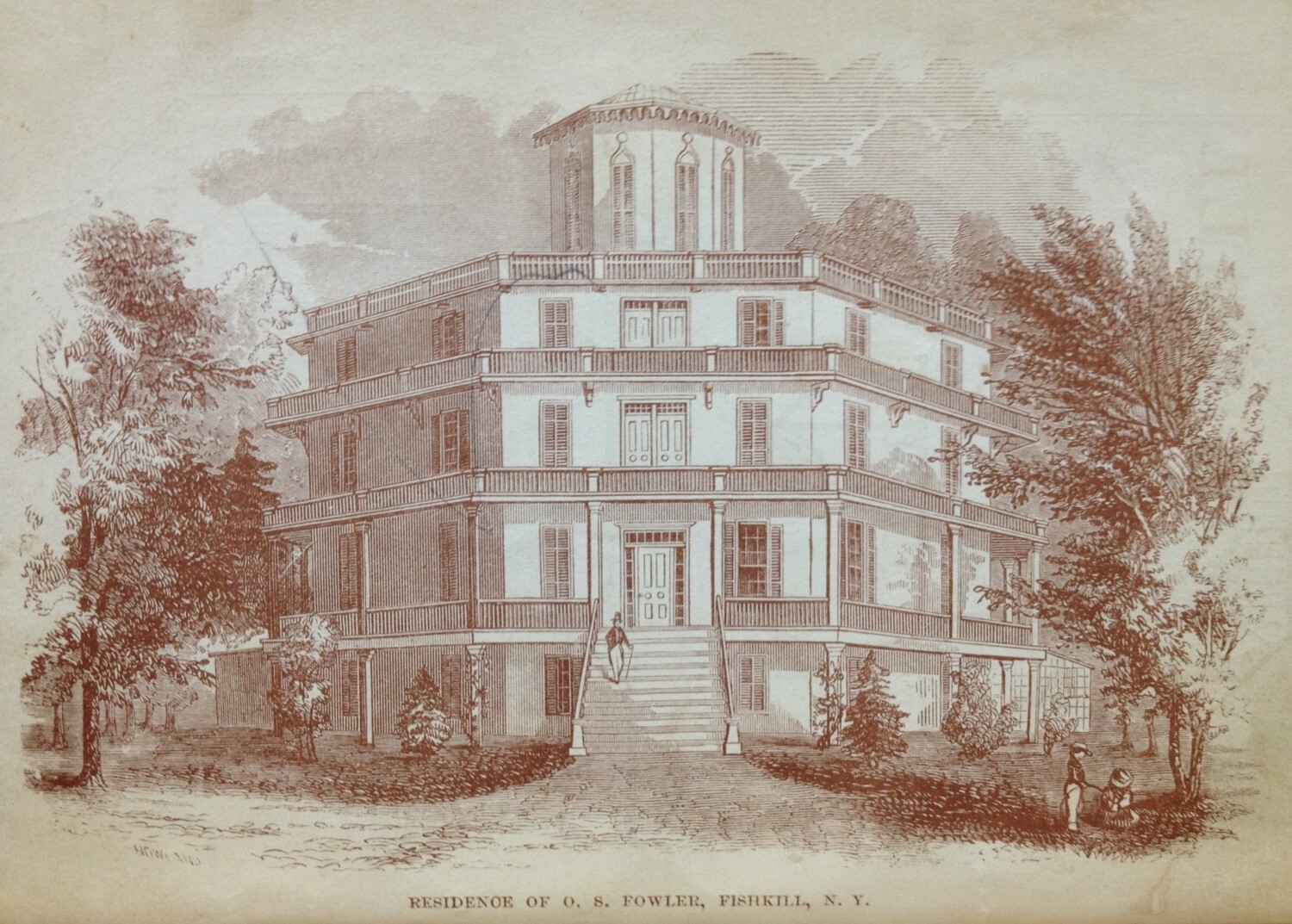Head Case
A pseudoscientist’s insane quest to perfect ourselves and our homes

Dubbed "Fowler's Folly," his own octagonal house was demolished in 1897.
After hearing that an eight-sided house once burned to the ground across the street
from me, I wondered what the thinking was behind its design. It turns out there was a
brainchild behind the country’s octagonal house craze in the mid-19 th century. As much
as he was mindful of what the ideal shape of our homes should be, he was equally
opinionated about what the shape of our skulls could reveal.
Orson Fowler was not an architect by trade. He was a phrenologist—an expert at
uncovering personality traits and mental abilities by simply examining our skulls. He and
his crackpot colleagues in this long-debunked pseudoscience believed everything to
know about the brain’s inner workings could be discovered outside of it. The theory was
that “organs” of the brain were responsible for specific functions. So, a bump here or a
depression there could indicate an excess or deficit in a particular area of a person’s
mental makeup. Armed with this cranial self-knowledge, individuals could then improve
their malleable minds to ultimately perfect themselves.
Orson Fowler and his brother, Lorenzo, were leading advocates of phrenology. Initially
they lectured throughout New England, where they read many a head. They went on to
turn many heads with this dazzling new “science” after opening the insanely popular
Phrenological Museum in Philadelphia in 1838. Packed with casts of skulls and eye-
popping charts, the museum’s phrenological portrait gallery of famous heads was a
main attraction. The Fowlers’ business, along with its slogan “Know Thyself” moved to
New York in 1842 and soon thereafter included a branch in Boston.
Considering all the possible applications for phrenology, it’s understandable how the
field took off: Who in their right mind would marry a spouse without a reading to
ascertain virtues and vices, strengths and weaknesses? Any employer who wouldn’t
insist that all job seekers have a reading should have his or her own head examined!
What better way to get a grip on applicants’ attitudes and aptitudes? In criminology,
phrenology was a vital tool in determining suspects’ culpability, as well as their capacity
for reform.
Though embraced by many worldwide, phrenology had its share of skeptics. When
Mark Twain first appeared for a reading in disguise Fowler initially diagnosed his serious
lack of humor. A few months later, when Twain returned for a second reading as his
recognizable self, Fowler proclaimed his abundance of humor.
While Orson Fowler pursued his passion for phrenology to perfect mankind, he spent a
decade envisioning the perfect home. He even wrote a book about it, “The Octagon
House, A Home for All” explaining the merits of this novel design in exhaustive detail.
From its efficient layout to its ease of heating (improved airflow) and cleaning (fewer
corners), he promoted its geometric superiority over traditional boxy forms.
Fowler goes to great lengths to overcome any possible perceived objections to his
design. Should a homemaker have an inkling that the kitchen might be too close to the
sitting room, he relieves her mind with this nugget: “The sight of a tidy kitchen is not so
very disgusting, even to men of refined tastes.”
Whether squeamish or not, most might find several of Fowler’s other ideas distasteful.
He saw no reason why members of a household in good health couldn’t regularly trudge
their way to the outhouse to heed nature’s call as they had for millennia. He felt
“infirmed guests,” though, might appreciate the added “hospitality” of a newfangled
“water closet” discreetly tucked under the stairs. As a welcome bonus, Fowler suggests
that homeowners collect their waste in the basement for use in the garden.
Nobody knows exactly how many of Fowler’s followers transformed the stool of
unsuspecting invalids into more robust vegetable plants. However, Fowler’s 1848 book
(almost 200 pages of utter B.S. written in flowery prose) was the inspiration for several
thousand octagonal homes to crop up in the U.S. and Canada. As many as 22 were
built in Rhode Island, with 11 of them surviving today. Fowler’s own 60-room, 70-ft tall,
8-sided colossus in Fishkill, New York was eventually dubbed a public safety hazard
and blown up in 1897, around the same time the field of phrenology went up in smoke,
as well.